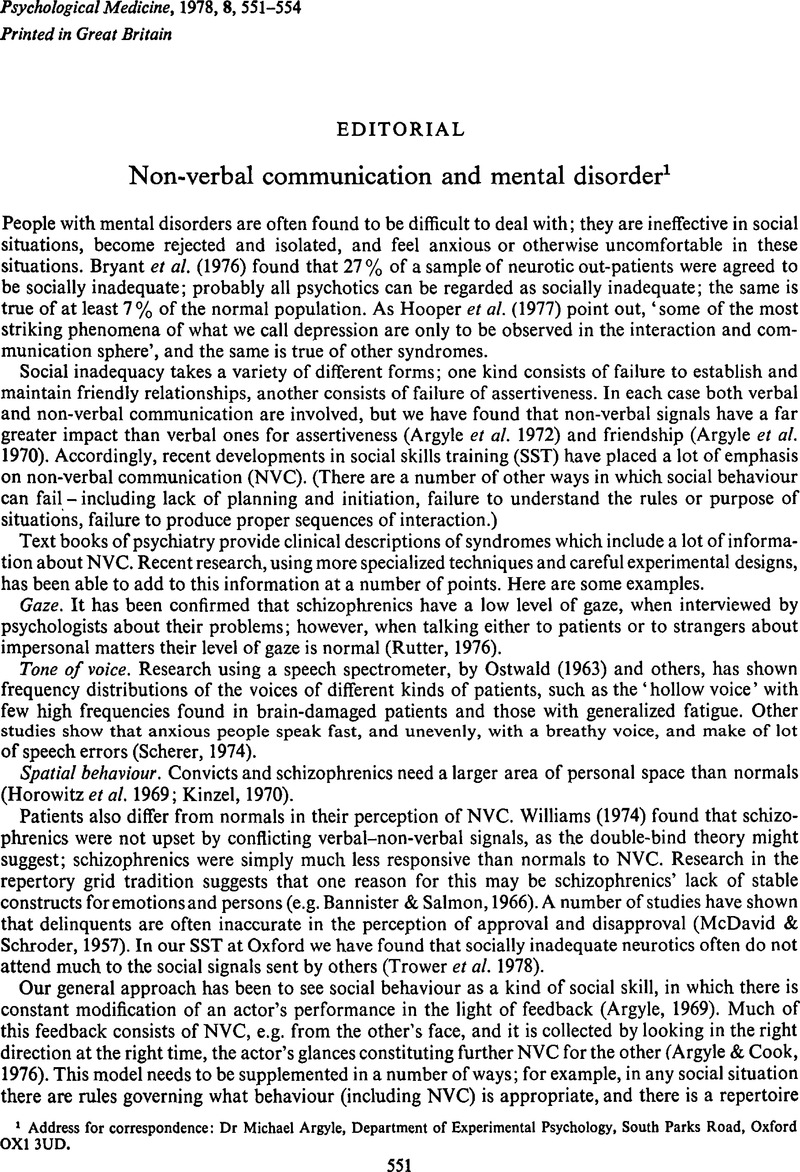Crossref Citations
This article has been cited by the following publications. This list is generated based on data provided by Crossref.
McGuire, Michael T.
and
Polsky, Richard H.
1980.
Ethological assessment of stable and labile social behaviors during acute psychiatric disorders: Clinical applications.
Psychiatry Research,
Vol. 3,
Issue. 3,
p.
291.
Boice, Robert
and
Kraemer, Elizabeth A.
1981.
Stereotypies as behavioral indices in mental patients.
Journal of Nonverbal Behavior,
Vol. 6,
Issue. 1,
p.
30.
Mann, Louise
and
Whall, Ann
1984.
INFORMED CONSENT and the Deinstitutionalized Patient.
Journal of Psychosocial Nursing and Mental Health Services,
Vol. 22,
Issue. 1,
p.
22.
Allen, Heidi
1990.
Cognitive Processing and its Relationship to Symptoms and Social Functioning in Schizophrenia.
British Journal of Psychiatry,
Vol. 156,
Issue. 2,
p.
201.
Bouhuys, A.L
Geerts, E
and
Mersch, P.P.A
1997.
Relationship between perception of facial emotions and anxiety in clinical depression: does anxiety-related perception predict persistence of depression?.
Journal of Affective Disorders,
Vol. 43,
Issue. 3,
p.
213.





